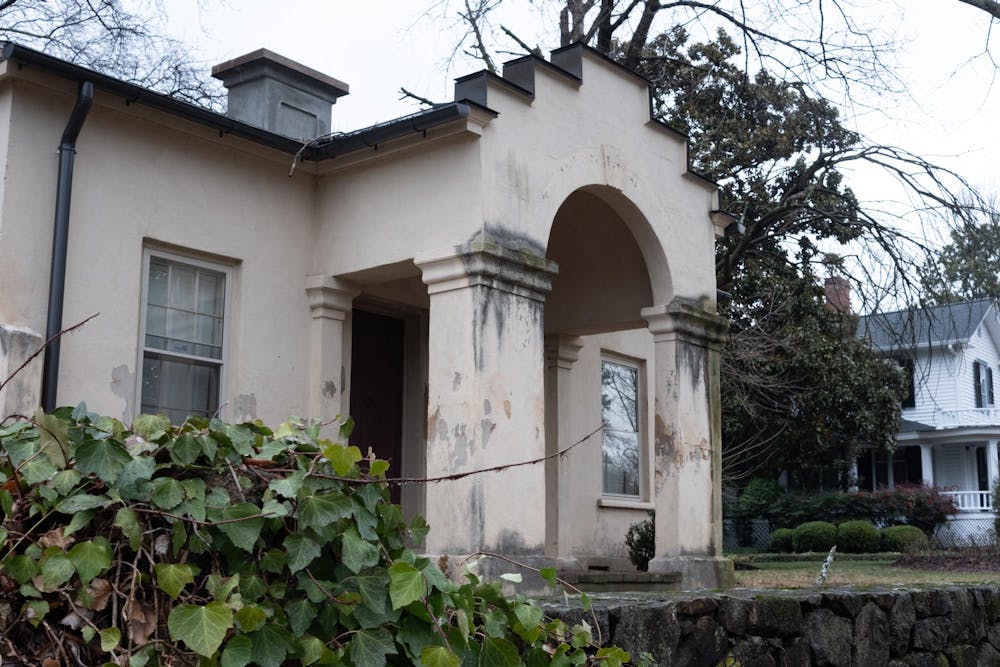A brick path with names of PCH donors leads up to the freshly painted cream exterior. Inside, original furniture, ceilings and woodwork give the impression of a living museum.
It was built in 1854 by Benjamin Hedrick, a professor at UNC. It ended up in the hands of another professor, Horace Williams, who gave the house to the University upon his death in 1940. In 1973, UNC began renting the house to PCH with the agreement that PCH renovates and maintains it.
Though PCH interacts often with Chapel Hill's Historic District Commission, the organization is not financially supported by the city.
“We often advocate for preservation with the town council,” PCH President Phill Lyonssaid. “Something will come up and we'll say, ‘We really think we want to remind you that our history of our town is found in our buildings, as well as in its people.'”
The organization is able to offer low-interest loans and grants for various renovation projects for historic buildings through the support of private donors. In exchange, PCH places covenants on the buildings it helps to preserve, often requiring the homeowner to maintain the historic features of the exterior.
PCH also maintains a list of endangered buildings — which typically earn their place through poor exterior conditions or plans for demolition.
One building sits prominently at the top. Past the shops and the sorority houses, at the crowded intersection of East Franklin and Hillsborough streets, stands 401 E. Franklin St.
Surrounded by a low rock wall, a brick path leads to an arch supporting the stepped gable porch. Beneath it, two doors lead to an interior no larger than 1,100 square feet.
Though not a striking building in architecture alone, it carries stories of Chapel Hill history and the UNC School of Law in its infancy. Samuel Field Phillips built it in 1843 for use as a law office, and it came to be known as the Phillips Law Office.
Phillips served as the second solicitor general of the United States and later went on to represent Homer Plessy in the landmark Supreme Court case, Plessy v. Ferguson.
He later used the building as a classroom for what some consider the first law classes at UNC.
“Lots of times we think of that as being the genesis of the law school and later on the University established a real law school,” Tom Heffner, the treasurer of PCH, said.
To get the day's news and headlines in your inbox each morning, sign up for our email newsletters.
In its 181-year lifetime, the Phillips Law Office has seen better days.
Grime drips down the front pillars and side buttresses, and the stucco flakes off the exterior, betraying the building’s age and neglect. It has been vacant for decades. Save for a roof replacement, it has largely been left to the elements since its purchase by a private owner in the 1990s.
Lyons said PCH has attempted to get in contact with the owner, and his ultimate goal is for the building to be sold to the organization so it can be renovated and its history preserved.
Although their mission to preserve the law office is ongoing, PCH continues to provide support to owners of historic properties in Chapel Hill as they have for 50 years.
"We have so much gratitude to them for their consistency, their persistence, in acknowledging the value and the legacy of the Strayhorn property," Clark said.
@ktrchurch
@dthlifestyle | lifestyle@dailytarheel.com



